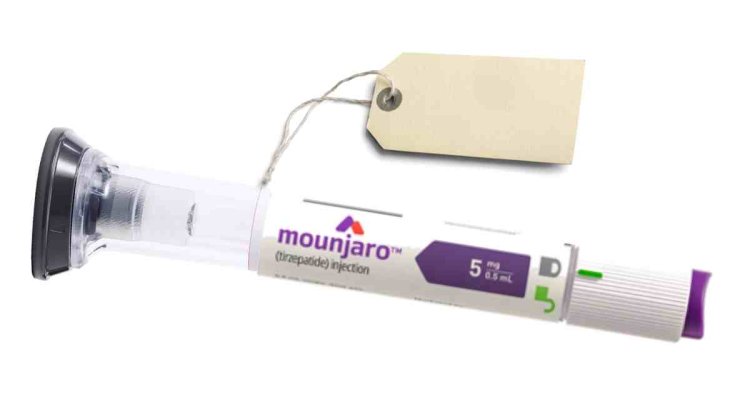Mounjaro Injection: Mixing With Insulin?
Share this Post to earn Money ( Upto ₹100 per 1000 Views )
For many people managing type 2 diabetes, combining medications is essential to keep blood sugar levels in check. One question that often arises is whether Mounjaro Injection (tirzepatide) can be safely and effectively mixed or used alongside insulin therapy. Both Mounjaro and insulin play critical roles in diabetes management but work differently in the body. Understanding how they interact, when they can be combined, and what precautions to take can help optimize your treatment plan.
In this article, we’ll explore everything you need to know about using Mounjaro with insulin, including benefits, risks, and expert recommendations.
What Is Mounjaro Injection?
Mounjaro injection حقن مونجارو is a once-weekly injectable medication that acts as a dual agonist on the GLP-1 and GIP receptors. By stimulating these receptors, it helps:
-
Enhance insulin secretion when blood sugar is high
-
Suppress glucagon release
-
Slow gastric emptying
-
Reduce appetite, aiding weight loss
Mounjaro is approved for type 2 diabetes treatment and is increasingly used off-label for weight management.
How Does Insulin Therapy Work?
Insulin therapy replaces or supplements the insulin your body does not produce or uses inefficiently. Insulin lowers blood sugar by:
-
Promoting glucose uptake into muscle and fat cells
-
Suppressing glucose production in the liver
Insulin can be short-acting, long-acting, or a mix, with dosing tailored to individual needs.
Can You Use Mounjaro Injection With Insulin?
Yes, many patients safely use Mounjaro alongside insulin under medical supervision. Combining these medications can offer several advantages:
-
Improved blood sugar control: Mounjaro complements insulin by targeting different pathways.
-
Weight management: Insulin often causes weight gain; Mounjaro’s appetite suppression can help offset this.
-
Potential for lower insulin doses: Adding Mounjaro may reduce insulin requirements, minimizing risks of hypoglycemia and weight gain.
However, combining treatments requires careful monitoring.
Important Considerations When Mixing Mounjaro and Insulin
-
Consult Your Healthcare Provider
Never start, stop, or adjust doses of Mounjaro or insulin without guidance. Your doctor will evaluate your overall health, blood sugar patterns, and risks. -
Risk of Hypoglycemia
Since both Mounjaro and insulin lower blood sugar, there is an increased risk of hypoglycemia (dangerously low blood sugar) when combined. Monitoring blood glucose closely and recognizing hypoglycemia symptoms is vital. -
Adjusting Insulin Dose
Starting Mounjaro often requires reducing insulin doses to prevent hypoglycemia. Your healthcare provider will guide the proper adjustment. -
Timing of Injections
Mounjaro is injected once weekly, while insulin may be daily or multiple times a day. Adhere strictly to your dosing schedule. -
Watch for Side Effects
Both medications can cause gastrointestinal symptoms (nausea, vomiting). Combining them may increase the intensity, especially early on.
How Does Combining Mounjaro and Insulin Improve Diabetes Management?
Combining these medications targets different mechanisms:
-
Insulin directly lowers blood sugar by promoting cellular uptake of glucose.
-
Mounjaro enhances natural insulin release when needed, reduces glucagon (which raises blood sugar), and promotes satiety, reducing calorie intake and supporting weight loss.
This complementary action often leads to better glucose control and metabolic health than either medication alone.
Patient Scenarios Where Combination Is Common
-
People with advanced type 2 diabetes who need additional blood sugar control beyond oral medications.
-
Individuals gaining weight on insulin who want to lose weight safely.
-
Patients transitioning from basal-bolus insulin regimens who want to simplify injections.
-
Those experiencing insulin resistance where higher doses are required.
Tips for Managing Mounjaro and Insulin Together
-
Check blood sugar regularly: Frequent monitoring helps catch lows and adjust doses.
-
Carry glucose tablets or fast-acting carbs: To treat hypoglycemia promptly.
-
Stay hydrated: Both medications can cause nausea; hydration supports tolerance.
-
Report side effects: Always inform your healthcare team about any adverse symptoms.
-
Maintain a consistent diet: Avoid large fluctuations in carb intake.
Can Mounjaro Replace Insulin?
While Mounjaro is highly effective, it’s not a substitute for insulin in all cases, especially for people with type 1 diabetes or advanced beta-cell failure. Your doctor will determine if you can reduce or stop insulin once Mounjaro is started, depending on your blood sugar trends and overall health.
Summary
-
Mounjaro Injection and insulin work well together for many patients.
-
Combination therapy offers improved blood sugar control and potential weight benefits.
-
Close monitoring and dose adjustments are essential to avoid hypoglycemia.
-
Always use these medications under professional supervision.
Final Thoughts
Combining Mounjaro Injection with insulin is a promising strategy for many people with type 2 diabetes, especially those struggling to reach glycemic targets with insulin alone. It allows for a multi-pronged approach to glucose control and weight management. However, due to the increased risk of hypoglycemia and potential side effects, this combination requires careful medical oversight.


















